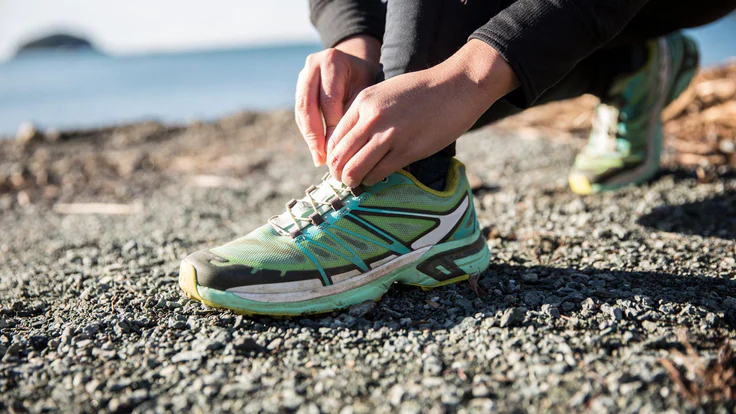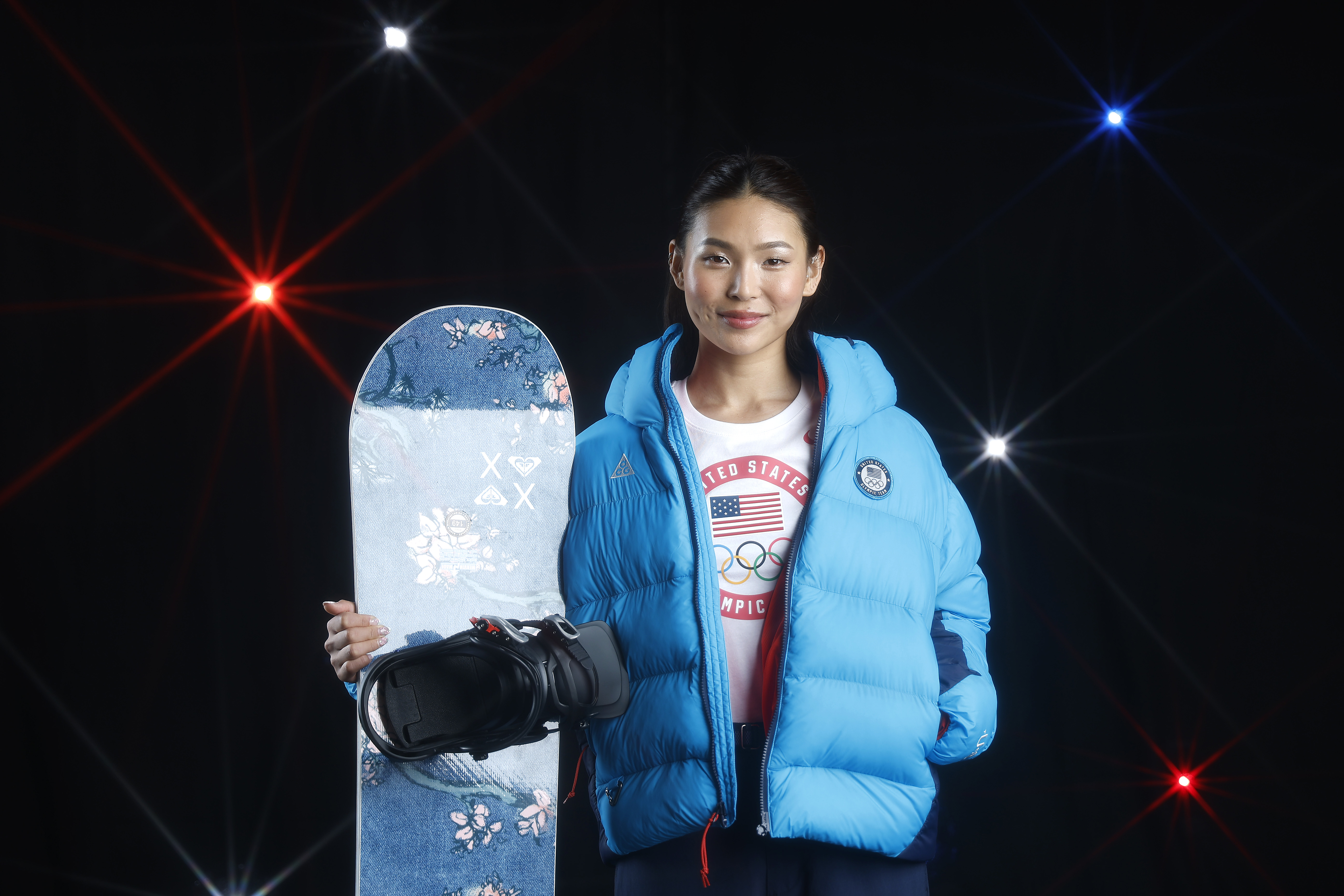Tips for Understanding Running Shoe Terminology to Find Your Perfect Fit

Deciphering running shoe terminology can be confusing. Terms like heel drop, pronation, and upper can be overwhelming. Luckily, working with a shoe professional at a running store can eliminate the need to understand all the buzzwords. However, if you're buying shoes online, or just want to educate yourself, this guide will help you navigate the jargon.
Pronation refers to how your foot rolls during walking or running to distribute impact. There are three categories of pronation:
During a running store shoe assessment on a treadmill, a trained professional can observe your gait to determine your pronation type.
It's important to note that pronation is a natural process and highly individual. There's no "right or wrong" way; however, shoes can optimally fit and support your feet and gait. According to John Honerkamp, RRCA and USATF certified running coach, "if it's not broken, don't fix it." Honerkamp advises runners not to worry too much about form unless there's an ongoing issue. "One of my biggest pet peeves is when I see runners trying to run on their tippy toes because their doctor tells them not to heel strike. I say heel strike away if it works for you."
But suppose injuries sideline you frequently. In that case, Honerkamp suggests understanding your gait, becoming a detective, and focusing on the particulars of over-pronation or supination.
Support refers to a shoe's structural correction, cushioning, and stability. Support can be neutral or stability shoes. The primary difference between these types of shoes is the level of support and foot correction.
Cushioning provides shock absorption via a shoe's midsole, the cushioned layer beneath your foot but above the sole. Cushioning is categorized into minimalist, moderate, and maximalist.
According to Honerkamp, those with high arches are more likely to be okay with neutral or minimalist shoes. "Moderate and maximum cushioning come into play if you're looking for a more shock-absorbent ride. I will opt for a more cushioned shoe if I am running on more concrete, sidewalks, or roads versus a nice soft trail."
Heel-to-toe drop (HTT drop) is the difference in height between a shoe's heel and forefoot. HTT drop affects running form by influencing gait mechanics.
Responsiveness refers to a shoe's ability to return energy during a runner's stride. Responsive shoes provide a sense of bounce and less fatigue. This aspect is impacted by the sole material, cushioning, and shoe design. However, responsiveness may be a trade-off with cushioning and stability.
The physical mass of a shoe, or the shoe weight, influences comfort, injury risk, and performance. The higher the weight of a shoe, the more energy is required from a runner (think: slower time and increased fatigue). The lighter the shoe, the more effortless and quick you may feel. Cushioning and stability design features may weigh a bit more, but they provide necessary injury protection and comfort.
The upper, or the top part of the shoe that covers the foot, plays an incredibly important role for overall shoe fit (but doesn't typically get a lot of love). This key feature holds the foot in place, providing a snug, custom fit that carries you (and the shoe) for miles. There are four key factors you'll likely want to consider with the upper: breathability, durability, flexibility, and fit.
Heel counter is the name for the piece of material at the back of a running shoe that supports the heel and ankle. It enhances the fit of a shoe and prevents excessive pronation and supination. Runners who struggle with plantar fasciitis or shin splints may want to choose shoes with a solid heel counter.
Important for traction, cushioning, and support, the sole of a running shoe is the bottom part that contacts the ground. Soles for running shoes are made from different materials. The sole you select is usually related to the use case of the shoe. For example, a rubber sole has excellent traction and grip, making it perfect for running on a variety of surfaces. A carbon fiber sole is very lightweight and strong, but has very little cushioning, making it most ideal for competitive, shorter-distance runners.
Foam soles are typically used in many running shoes. Ethylene-Vinyl Acetate (EVA) foam is lightweight, flexible foam (usually used in the midsole), whereas polyurethane (PU) foam is denser, providing more stability and support. Highly responsive shoes typically use thermoplastic polyurethane (TPU plastic) in the mid or outsole.
The toe box is exactly what it sounds like. It's the front part of the shoe where the toes go. It serves a very important purpose: It allows the toes to flex during the running stride. While the size and fit of a toe box are highly individual (some people prefer a snug fit, while others love to wiggle their piggies in a roomy toe box), finding the right size can improve overall foot function in the shoe and cut down on injury. A cramped and narrow toe box may result in calluses, bunions, and blisters, whereas a toe box that's too big may have you feeling like you're sliding around.
The tongue of the shoe is the part below the laces and on top of the instep (and between the upper and the foot) that looks similar to it's name. The purpose is to protect the feet from the laces and enhance the fit and comfort of a shoe. If you're looking for comfort, choose a thicker tongue. However, if you're not into the super-cushiony, padded feeling, a slim tongue that fits flush against your foot can offer a more aerodynamic feel.
The toe spring is a key design feature in a running shoe that causes an arch in the forefoot of the shoe. This arch allows for a smoother transition in your stride, particularly as the foot rolls forward and pushes off the ground. The natural shape mimics a foot's contour and improves the efficiency of a runner's gait. Some runners may not like the extra spring in their step, however, the toe spring does reduce the amount of stress on the metatarsal bones and toes, which can be helpful for those who have frequent foot or toe pain.
The medial post is the part of the running shoe that provides additional support on the inside (AKA medial) side of the foot. It helps to control overpronation (that is, when the foot rolls inward), improving foot stability and reducing the risk of injuries associated with overpronating, including plantar fasciitis, shin splints, and knee pain.
A sockliner (AKA insole) is the fancy term for the insert that provides an extra layer of support and cushioning on the interior of the shoe. In most simple terms, it's the part you take out when you put in your own orthotic.
Heel crash pads are helpful to improve cushioning for runners with a heel-toe gait. They maximize the efficiency of the foot landing, particularly during the heel strike phase of the stride. This shock absorber is great for runners who train mostly on hard surfaces like asphalt or concrete and is typically found in maximal shoes (AKA those with very thick midsoles). In simplistic terms, it's like an extra bouncy pad underneath your heel.




